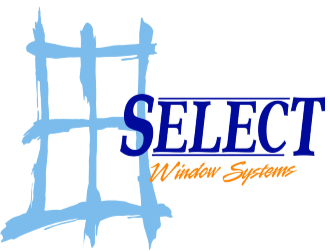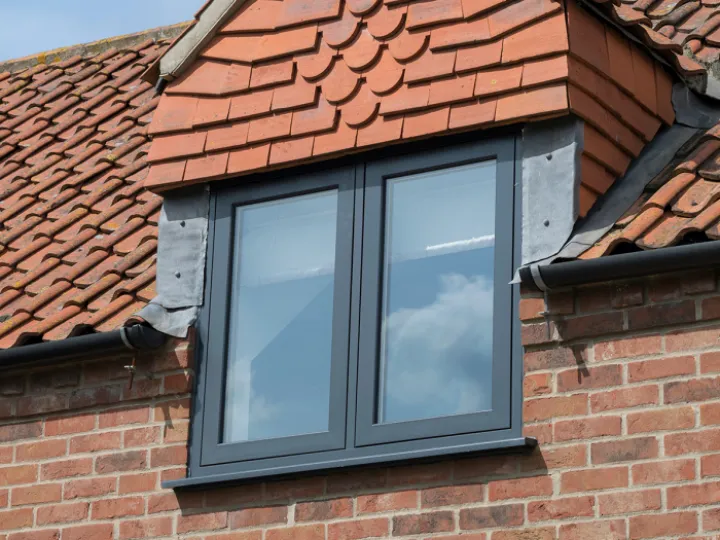Can you paint a uPVC door or window?
Yes, you can paint on uPVC
The short answer is 'yes' – it is perfectly possible to paint a uPVC door or window, but there are several things to watch out for. Some customers often feel that a fresh coat of paint on uPVC is a quick and cheap way to freshen up their home with a new colour scheme. But, there are many caveats to painting uPVC surfaces. You will need to carry out a lot of preparatory work, you will need to apply the correct paint, and the results may still not be as great as you had hoped for.
Don't paint a new uPVC door or window
It is best never to paint on uPVC until it is at least 12 months old. UPVS secretes resins used in the manufacturing process for up to a year after manufacture, and these resins will stop paint binding to the surface. Makers also often add a special plastic coat to new uPVC products to give them a shiny appearance. Either way, the new uPVC is unlikely to accept a coat of paint, so leave it at least a year before attempting to add a layer of paint.
Why paint a uPVC window?
uPVC is a durable, long-lasting material that is easy to keep clean and maintain, so it raises the question of why you want to paint it. The usual reason is to change the colour. uPVC windows and doors come with the colour 'baked' in. Not so long ago, the only colour available was white, but they now come in a wide range of colours. Nevertheless, you may tire of the current colour, and a coat of paint is the cheapest and easiest option. Provided you choose the right type of paint and apply it correctly, there should be no problem. Be aware, though, that you cannot replicate the smooth finish of uPVC even with a spray gun.
Choose the right paint
You cannot use any old paint for uPVC surfaces. Most paints are not designed to apply to plastic, which has a smooth surface. Even if applied successfully, ordinary paint on a plastic surface will not last very long. So, it's vital to choose a paint specifically designed to use on plastic surfaces. The paint must also be able to cope with the effects of thermal expansion and contraction during the summer and winter months and the impact of prolonged consequences of UV light.
Preparing to paint uPVC
You need to take several preparatory steps before attempting to paint over uPVC. The first is thoroughly cleaning all surfaces to remove stains, debris and dirt. This will help ensure the paint adheres well to the surface. Sand the surfaces with an abrasive gently. This allows the paint to adhere to the surface. Be careful not to use coarse sandpaper or to rub too hard, as any scratches may show through in the paint. uPVC is an unforgiving surface and will highlight brush marks, ridges or paint drips.
Painting a uPVC window or door
You can use an ordinary brush to apply your final coat of paint, but the results will be variable. It is difficult to avoid marks and streaks with a brush. There is also the danger of 'overloading' corners with paint. Most professionals will use spray paint on uPVC surfaces for a smooth, even finish that most resembles the original door or window. You should apply at least three coats of spray to ensure all areas are throughly covered, allowing plenty of time for each coat to dry before applying another.
You may need to wait several days for the primer to fully 'cure' before applying the topcoat, so check the manufacturer's instructions. This isn't a job for winter or when there is bad weather. Not only will it affect the paint surface, but your door or window may need to be left open for some time, with the inevitable security risk. Apply a primer to your window or door to further improve the adherence and finish of the final coat. If you are spray painting the uPVC (highly recommended), you must mask off all areas where you don't want the paint to land.
Advantages and disadvantages
uPVC is not designed to be painted on, and it's a difficult process for amateur painters. Painting over a uPVC door and window will probably shorten the product's lifetime. Paint will probably peel, chip or crack over time, particularly if the window or doors are south-facing and subject to lots of sunshine in the summer months. No matter how well applied, the paint will not have the smooth finish of the original and will need more maintenance than the original uPVC.
It's a cheap and effective way of sprucing up old or faded uPVC, provided you prepare the surface well and use the correct paint. But be aware that DIY work on a uPVC door or window, including painting, may void any warranty or affect insurance cover, so check documentation before going ahead.
More queries on doors & windows
How long do uPVC windows last?
Are timber doors worth it?
What is a composite door?
01606 863553 FOR A FREE QUOTE
on doors and windows
Select Window Systems accepts no responsibility or liability for any damages or costs of any type arising out of or in any way connected with your use of this website. Select Window Systems cannot be held liable for any actions taken in reliance on any published content, which is for information purposes only.
Select Window Systems
Phone: 01606 863553
Email: hello@swsonline.co.uk
Visit: Unit 2, Woodford Court, Winsford, Cheshire, CW7 2RB
Cheshire doors and windows.
Window and door installations across Cheshire.


